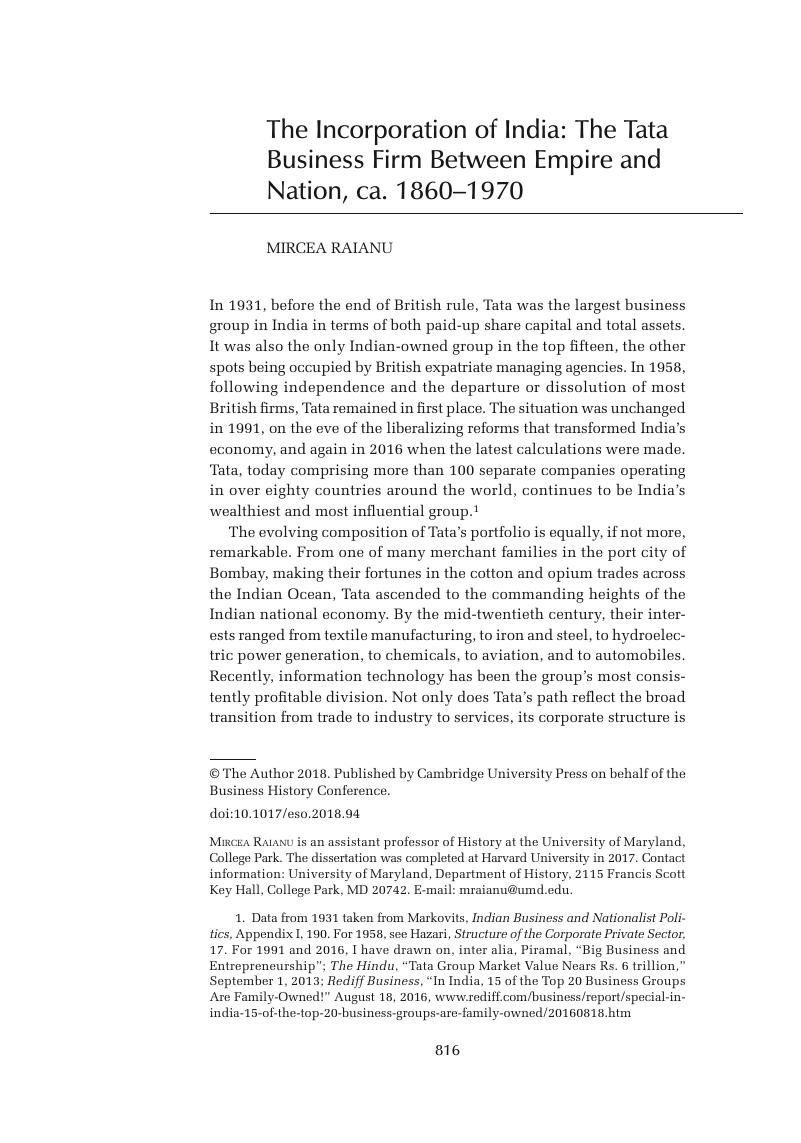Crossref Citations
This article has been cited by the following publications. This list is generated based on data provided by Crossref.
Tripathy, Jyotirmaya
2019.
Consuming Indigeneity: Baba Ramdev, Patanjali Ayurveda and the Swadeshi Project of Development.
Journal of Developing Societies,
Vol. 35,
Issue. 3,
p.
412.
Kale, Sunila S.
2020.
From company town to company village: CSR and the management of rural aspirations in eastern India’s extractive economies.
The Journal of Peasant Studies,
Vol. 47,
Issue. 6,
p.
1211.
Giacomin, Valeria
Jones, Geoffrey
and
Salvaj, Erica H.
2021.
Business investment in education in emerging markets since the 1960s.
Business History,
Vol. 63,
Issue. 7,
p.
1113.
Balachandran, Balakrishnan
Joshi, Arjun
and
Li, Yue
2023.
Private Cities: Outstanding Examples from Developing Countries and Their Implications for Urban Policy.
p.
183.
Tripathi, Ritu
and
Karumathil, Anjana
2024.
Humanistic Leadership Practices.
p.
237.





